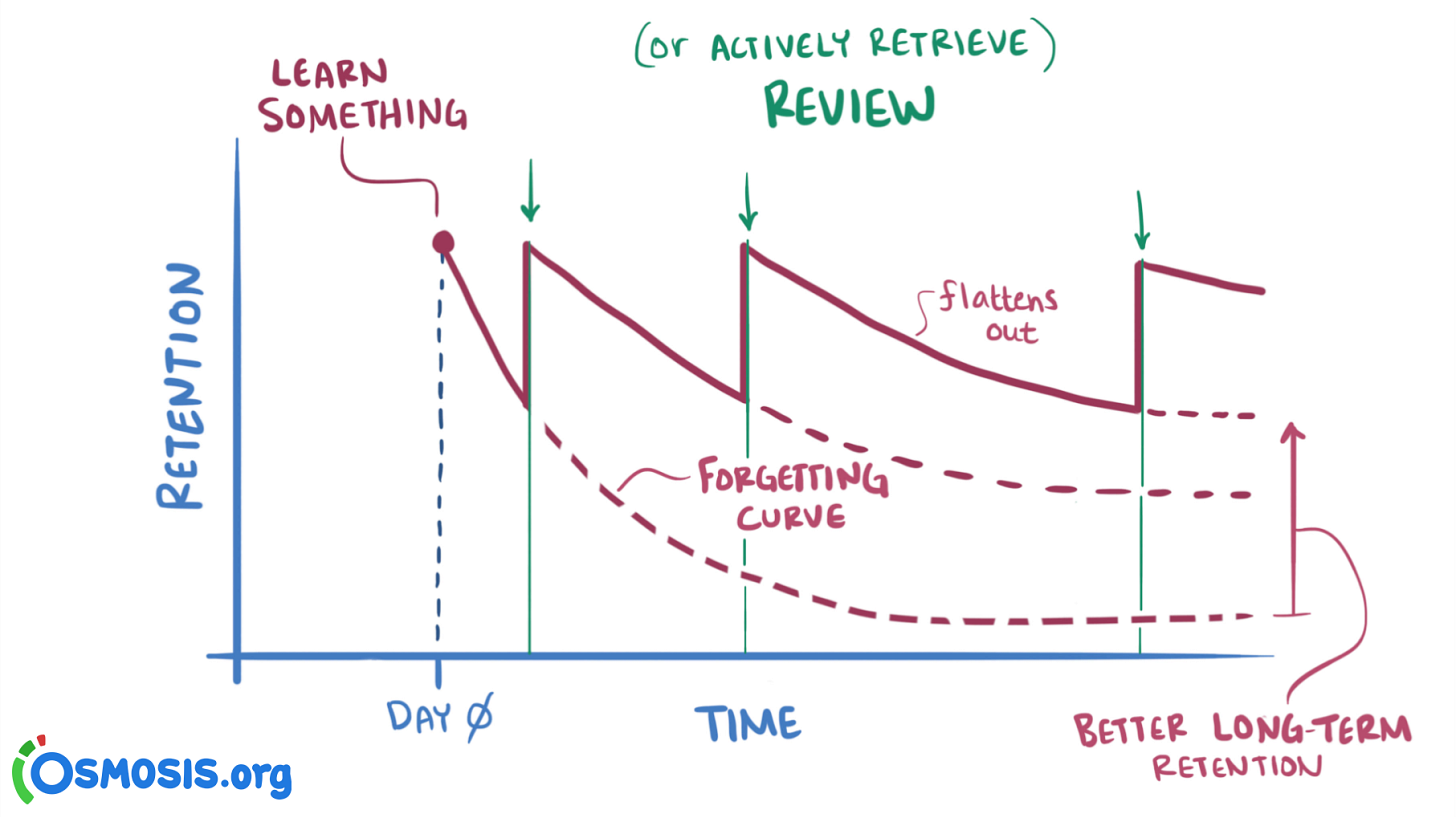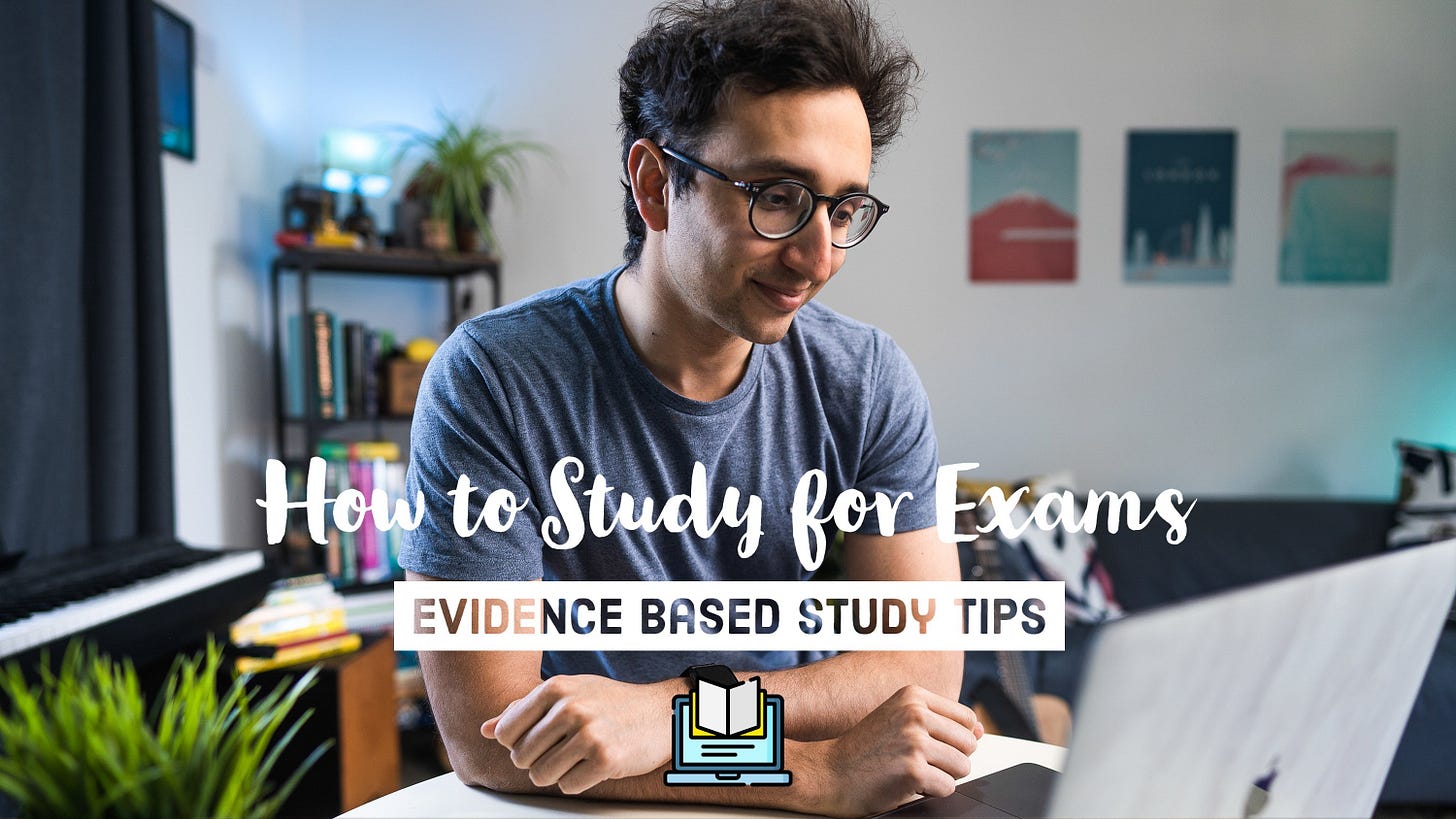The Ultimate Guide to Studying; How to Study Smarter Not Harder
Evidence-based techniques and tips/hacks to get more things done
In school, we get to study many different subjects. However, we are never taught how to study these subjects effectively using the correct techniques. It is a reality that the methods that most students think are most intuitive are not the most effective ones.
Many students often think that long hours of studying are the best and most guaranteed path to being a model, straight-A student. It is a myth because research shows that highly successful students spend less time studying than their peers do, but they end up getting much better grades: they study smarter, not harder.
Therefore, in this article, I am about to share with you the most powerful and effective evidence-based study techniques as well as some study tips that you can implement in your studying to get the most out of it and to space up a time to enjoy other things that matter to you.
✅The best Evidence-based techniques
* Active Recall 🧠
* Spaced Repetition ⏳
* The Pomodoro Technique 🍅
* The Feynman Technique 👨🏫
* Interleaving 🖇
👎Popular but insufficient techniques
* Rereading 👩💻
* Multitasking 🤹
* Highlighting ✨
* Taking Notes 📝
🧠Active Recall
Active recall is one of the most effective study techniques. It is simply a retrieval practice to actively stimulate memory during the learning process by testing yourself regularly when you are studying to move the information from short-term to long-term memory.
I use active recall a lot. When I am learning something new, I use to look somewhere away from my book and try to recall what I’ve just read. This does not only strengthens my ability to retain new information but also enhances connections in my brain between what I am learning with other concepts.
Research from 2013 that analyzed many different studies about effective revision techniques concluded that active recall is a “high utility” technique that can be implemented effectively with little effort.
🔐How to apply it?
When you want to learn new information, skim the material or the book to get an idea of what it is about, then write down some questions that pop up in your mind before reading the book. When you finish reading a chapter of your book, close the book and try to explain the key concepts in that chapter using your own words. In other words, try to recall from memory the information you learned. Once you finish that open the book again and review your answers and add what you have missed. This is called the SQ3R method which stands for survey, question, read, retrieve and review.
⏳Spaced Repetition
Spaced repetition is an extremely efficient learning method where you space your revision at increasing intervals to fully encode the knowledge into your long-term memory.
When we learn something new, we gradually at an exponential rate forget more and more of it as time elapses. This is known as the forgetting curve, which is a mathematical formula by Hermann Ebbinghaus that originated in 1885. Studies have shown that humans forget about 50% of new information within an hour of learning it.
Therefore, when learning something new, space your revision, preferably by active recall at specific intervals over a period of time. In other words, you allow your brain to forget some of the information to make sure that it takes active brainpower when you are revising the information. Studies emphasize that by getting your brain to work harder to retrieve information, you will be more likely to retain information and your memory becomes more durable.
🔐How to apply it?
To use the spaced repetition method you need to plan short and frequent review sessions and review the things you learn over an extended period of time rather than learning the whole thing once and then forgetting all of it as time passes.
I highly recommend using the app Anki where you get to spontaneously practice Spaced repetition in which will test you on bite-sized pieces of information through flashcards and automatically schedule the cards for you to review based on the difficulty of recall for each.
🍅The Pomodoro Technique
The Pomodoro technique is a simple yet effective time management system that encourages students to absorb information in smaller chunks separated by breaks as it is much easier to get these smaller chunks to stick in their minds than it is to go through it as a single string of information.
Basically, you divide your study sessions into 25-minute chunks separated by five-minute breaks, and after four cycles “Pomodoros”, you take a longer break of about 15 to 20 minutes. The Pomodoro technique donse’t only help you to focus on a small chunk of information but planned breaks also help to stand up and stretch your legs and then return to your studies fully energized again.
😒The problem with the Pomodoro technique
Sometimes, I experience the timer being an interruption that inhibits my ability to get into a flow state. Meaning that if I am highly focused and productive on one specific task, but the timer goes off 25-minutes which means I need to take a 5-minutes break, I get distracted and lose my flow state. I solved this problem by deciding how much time I need to get a specific task done, and it doesn’t have to take just 25-munites, it can take from 10-munites to an hour based on the difficulty and time-consuming of the tasks.
🔐How to apply it?
You can apply the Pomodoro techniques very simply by using a to-do list and a timer or a website such as Pmofocus that specializes in providing the Pomodoro technique.
👨🏫The Feynman Technique (Become a Teacher)
The Feynman technique is a simple way of approaching anything new you want to learn by explaining the concert you’re learning to yourself to anybody else using concise thoughts and simple language. You don’t have to teach it to other people, you can seriously teach it to yourself, your bottle, or your cup of coffee because it doesn’t really matter. What matters is that you break down the material you’re studying using your simplified words to explain it. Research shows that students have better memory and recall abilities when they teach what they already can to someone else.
When we are learning something new, we think that we have a good grasp of the subject. However, when we stop ourselves and try to explain what we have learned to our peers for example it becomes harder, which means that we know the subject, but we don’t really understand it. There is a difference between knowing something and understanding it.
As Albert Einstein once said that “ you don’t know something well if you can’t explain it to a child”
The Feynman technique was a big advantage for me helped as while I am teaching what I’ve learned to someone else, I understand it much better. Through this method, I also get to know what it is that I actually don’t understand enough.
🔐How to apply it?
Chose a topic you have studied
Explain the key elements of the topic using simple language. Ask yourself “would a small child understand what you are explaining?
Identify the things you found hard to explain
Go back and review these areas from your notes, textbooks, or lectures.
🖇Interleaving
Interleaving means to interleave or mix multiple subjects or topics while you study to grow your brain and improve your learning. Instead of focusing exclusively on one concept or topic at a time, you can relate concepts or topics, which will lead to better long-term retention and improve your ability to transfer learned knowledge. Addentianly, interleaving helps your brain to see the similarities and differences between the topics you are studying.
Research shows that interleaving is more effective than blocked practice for developing the skills of categorization and problem-solving.
🔐How to apply it?
Choose several topics and spread them throughout your study sessions.
Revise one topic for a short time, then switch to another topic, then another. Be careful not to switch too much.
When you come back to the topics again as part of your spaced practice review them in a different order.
👎Popular but inefficient techniques
🤹Multitasking
Multitasking is a myth. Many students think that they are killing two birds with one stone when they multitask, but in reality, you can not be focusing on two things at the same time. You don’t actually multitask, you switch between two tasks several times, and that switching requires more energy from your brain. Ultimately, you end up wasting your time and damaging your energy.
Research conducted at Standford University revealed that students are less productive when they multitask than when they focus on doing a task at a time.
👩💻Rereading
Rereading is the student’s number one choice to learn new and memorize information. In fact, rereading is just a waste of time because, with rereading, you are not actively retrieving the information, you are just reading and over again until you feel like the information has stuck.
Many studies show that “ repetitive reading produces little or no benefit for learning”
✨Highlighting
Highlighting is drawing attention to the information in your notes or reading materials by coloring or underlining the important information. Students often combine reading with highlighting which means passive learning and passive reinforcements are not a good use of your time. It is so much more effective to use the techniques we have mentioned above such as recalling information to let the information move over to your long-term memory.
The benefits of highlighting:
As Studies show highlight is not a low utility, but I think highlighting can be beneficial sometimes because:
It can help you to get to better techniques like active recall and spaced repetition
Highlight in different colors depending on the information, helps you to understand the situation a little bit better
Helps you concentrate a little bit better while reading
It looks pretty
✅More tips to make your studying more sufficient
1. Switch up your environment
This Increases recall performance and improve your memory and concentration levels
2. Eliminate Distractions
Put your phone away and avoid any background noises such as the TV or radio.
3. Exercise Before Studying
Studies show that our brainpower gets a boost following even a short workout. Exercising before studying has been a game-changer for me because it increases my energy levels as well as my concentration and gets me in the best position to study as efficiently as possible and really get things done.
Especially When I am feeling laze and have no motivation to study, I go to the gym and come back fully energized.
4. Scoping the subject
In order to understand something we have to understand where the subject fits into the wider and bigger picture
5. Start with the toughest task
I used to start with the smaller task or the easier task to get me sort of warmed up for the bigger and most energy-required or, to be honest with the tasks the I don’t like, but I end up doing the smaller tasks and not finding enough time for the toughest tasks or get bored or tired with it time to do these tasks. In addition to that, If I let the harder tasks last, I’ll have them hanging over my head for the whole study session, which costs unnecessary mental energy.
6. Use Apps to get your studying to organize
I highly recommend you use Notion and Anki
7. Reward yourself
Studies show that rewarding yourself for doing your work helps you enjoy the effort more.
🙌RECOMMENDED!
* Study less study smart by Marty Lobdell
Lobdell is a professional psychologist who taught Psychology at Pierce College in Washington State for 40 years. In his well-known video, Study Less Study Smart, he goes into detail through studying techniques that help the brain retain information.
* How to Study for Exams Masterclass _ By Ali Abdaal
References
D.Karpicke, Jeffrey (2016) A powerful way to improve learning and memory, American Psychological Association, June. https://www.apa.org/science/about/psa/2016/06/learning-memory (Retrieved 2021-10-01)
Gorlick, Adam (2009). Media multitaskers pay mental price, Stanford study shows, Stanford News, 24 August. https://news.stanford.edu/news/2009/august24/multitask-research-study-082409.html (Retrieved 2021-10-01)
Jubbal, Kevin (2020) 7 Evidence-Based Study Strategies (& How to Use Each), Med School https://medschoolinsiders.com/study-strategies/7-evidence-based-study-strategies-how-to-use-each/ (Retrieved 2021-10-01)
The University of North Carolina at Chapel Hill, Studying 101: Study Smarter Not Harder https://learningcenter.unc.edu/tips-and-tools/studying-101-study-smarter-not-harder/ (Retrieved 2021-10-01)
The University of Arizona, Interleaving: A strategy in the Learning to Learn Series, Academic Affairs https://academicaffairs.arizona.edu/l2l-strategy-interleaving (Retrieved 2021-10-01)
My picks of the week 🙌
🎧Podcast: Stop Asking for Permission by Gregg Clunis
📺Videos: Study less study smart - by Marty Lobdell
📚Book: Atomic Habits by James Clear
Reach me
Instagram: mohamed-elsayed-atta
Twitter: Mohamed Elsayed
Facebook: https://www.facebook.com/medo.atta.12
Email: medoamericanenglish@gmail.com
Phone number: +4768834516





